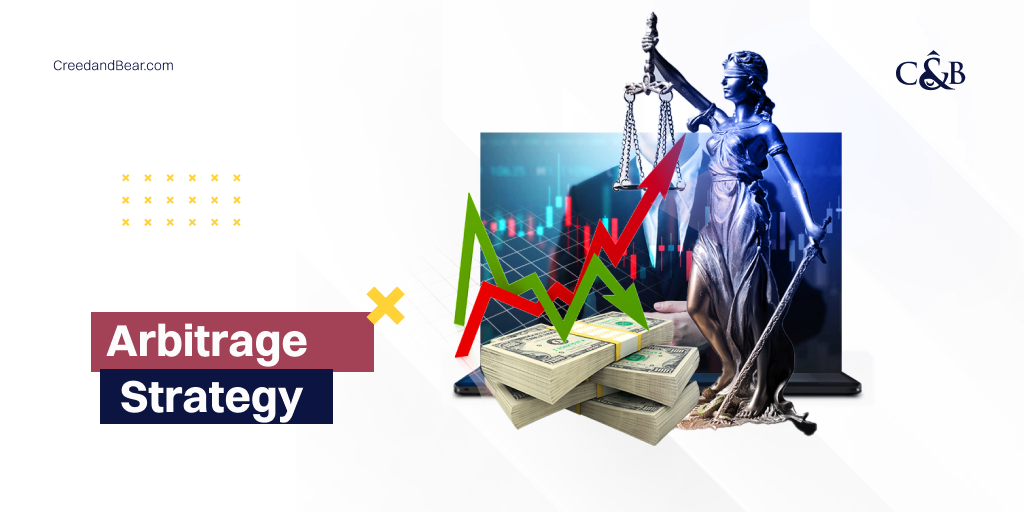Due to the fast-paced nature of financial markets, the price of an asset across different markets can often vary. This price discrepancy is an opportunity for traders to make a profit. You do it through a method called “arbitrage.”
What is Arbitrage?
Simply speaking, arbitrage works like this — if you can purchase an item at a lower price from one market and sell it at a higher price in another market, you gain from that price difference.
This simplified concept applies across an immense range of financial assets, including stocks, commodities, currencies, and derivatives.
Moreover, this trading strategy exploits momentary price differences across markets operating in different time zones. It involves monitoring multiple asset prices simultaneously and making near-instantaneous trades as and when the price differences occur. It is a humanly impossible task.
As such, traders use computer-powered algorithmic trading strategies to identify and capitalize on these price disparities. The pinpoint accuracy at which algorithms detect opportunities and execute trades enables traders to take advantage of split-second arbitrage opportunities.
Arbitrage Strategies Explored
Traders commonly employ various arbitrage strategies to capitalize on asset price differences.
- Spatial Arbitrage: Spatial arbitrage is the method of capitalizing on the price difference of one asset in various markets. Since markets operate in different time zones, there can often be gaps in the dissemination of information. Which results in differing asset prices. For, e.g., one stock that is surging in the U.S. might still be priced lower in Australia due to the timezone difference. This instance presents a buying opportunity for traders. One to accumulate more of the stock than would have been possible if they had bought in the U.S. stock market.
- Temporal Arbitrage: Temporal arbitrage involves analyzing the price variations of an asset at different points in time. Then, identifying patterns that could be exploited. One example is when a stock trades at a lower price due to reduced trading activity and volume within specific timeframes. This represents a prime opportunity for traders to buy the stock at a lower price. Then, sell it when trading volume accelerates again.
- Statistical Arbitrage: Statistical arbitrage integrates the principle of mean reversion, which was discussed in a previous blog. Mean reversion is the statistical principle that the price of an asset tends to revert to its historical mean over time. In arbitrage, the algorithm identifies the price relationship between multiple assets. Any time there is a price deviation from historical norms, the algorithm executes a trade in anticipation of a reversion to the mean.
Advantages Amplified by Arbitrage-Based Algorithmic Trading:
- Speed and Precision: Computers can execute trades in a split second. Which allows traders to take advantage of momentary price discrepancies before they normalize across the board.
- Risk Management: Arbitrage trading is focused on taking advantage of risk-free price differences. It reduces execution risk by excluding human emotion from the trade execution process.
- Expanded Range of Opportunities: Algorithmic trading programs can precisely monitor multiple assets and markets simultaneously. Naturally, this expands the scope of arbitrage opportunities for traders.
- Enhanced Efficiency: Arbitrage-based algorithms do not require human intervention. This eliminates the risk of manual errors while reducing operational costs and ensuring consistency.
Conclusion
Arbitrage-based algorithmic trading allows traders to expand their horizons and take advantage of more opportunities while reducing risk exposure and operational costs. The ability to capitalize on split-second price differences can yield significant returns over time. However, while the technology is at hand to enable high-speed precision trading, building the algorithm requires a deep understanding of market dynamics, economic trends, and risk management. Expert human input and insight remain invaluable to building a high-growth arbitrage trading strategy that maximizes positive outcomes and minimizes downside risk.
AI Usage: This article was initially drafted with the assistance of artificial intelligence and subsequently edited to ensure originality and avoid plagiarism. However, in the event that the content inadvertently resembles other works, we do not assume responsibility for any unintentional overlaps or similarities. We invite readers to notify us of any such resemblances so that we can make the necessary modifications in respect and consideration of other authors and brands.
Finance and Trading: The insights and opinions expressed in this blog post concerning trading and market are solely those of the author and should not be interpreted as financial advice. This content is for informational purposes only and does not constitute recommendations or endorsements for any specific investments, securities, or financial strategies. Readers should conduct their own research or consult with a financial professional before making any investment decisions.





